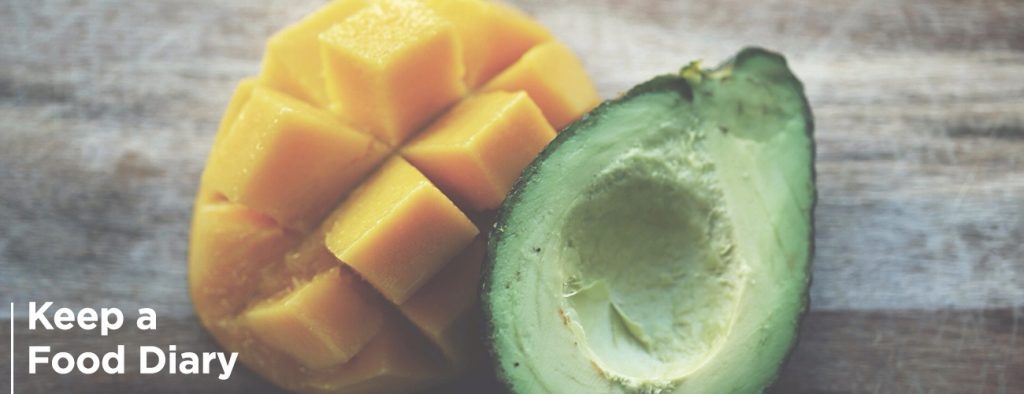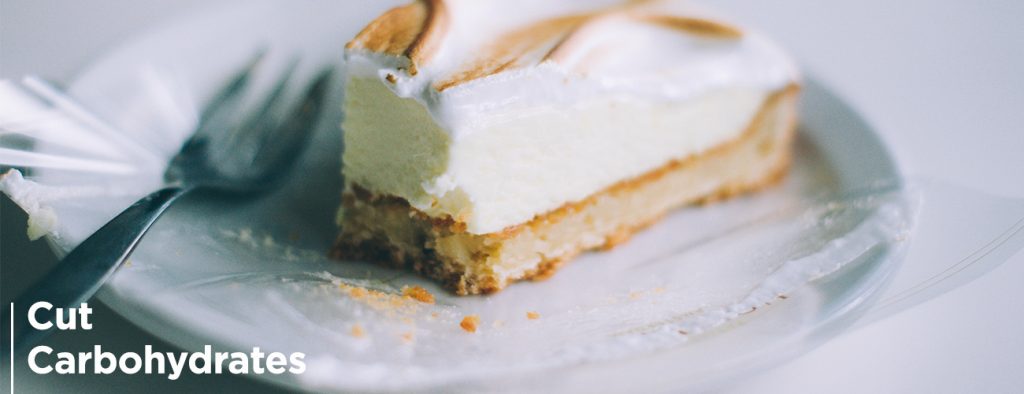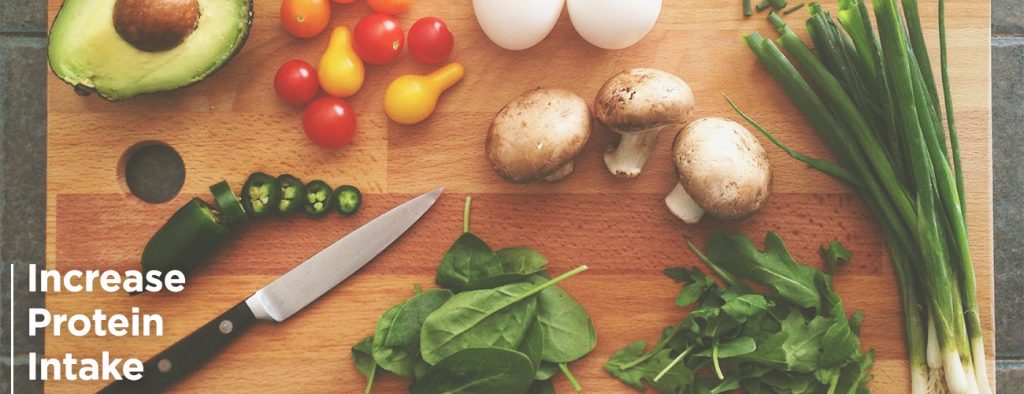Creating a Healthy Weight-Loss Plan

According to recent studies, more than 60 percent of Americans say they want to lose weight. To me, that’s not surprising. What is surprising, though, is that most of them don’t stick to a plan for more than a week or two. What strategies do people find most successful? Typically, the ones they create themselves. Rather than changing your life to follow the rules set by an established weight-loss plan, change the rules to follow your life.
Let’s take a quick look at a few popular weight-loss tactics backed by science to find realistic, easy ways to make them work for you.

Science Says: Keep a Food Diary When you write down everything you eat and drink, you often eat and drink less. Journaling helps expose bad habits that may typically be overlooked, and it provides the opportunity to change them. It also helps hold you accountable.
What You Can Do: Journaling can be tedious and boring. Sometimes we forget what we did five minutes ago, let alone what we had for breakfast this morning. Instead, try to keep a “reverse” diet diary where you track your menu ahead of time, and do your best to stick to it. It’s easier to go back and slightly modify your intake rather than starting from scratch. Check out the Choose MyPlate Super Tracker to determine your calorie needs and track your intake online.

Science Says: Cut Carbohydrates The average American eats about twice the recommended daily serving of grains, usually in the form of refined products like sweets, white bread, and pasta. This is in addition to the 20 teaspoons of sugar most of us eat and drink. Simply eliminating these empty calories will slash tons of calories from your diet. Forego that 20-ounce soda and you’ll save about 17 teaspoons of sugar and 250 calories!
What You Can Do: Cut some, but not ALL, carbohydrates from your diet. Your body needs carbohydrates for energy; plus, they provide a variety of vitamins and minerals. Your best bet is to eat smaller amounts of healthier ones, especially those that provide fiber (whole-wheat bread, fruits, and brown rice). To ensure you’re consuming the recommended five to six servings a day, have one with every meal and snack. Not sure what an appropriate serving is? Follow these recommendations and make sure grains don’t take up more than one quarter of your plate. If you do occasionally eat refined carbohydrates, pair them with a protein or healthy fat, like unsalted almonds, to prevent your blood sugar from spiking and crashing. Lastly, if you enjoy a regular glass of wine or cocktail, think about cutting back. A standard glass of wine can contain as many calories as a piece of chocolate. Ask yourself before pouring: Is it worth the calories?

Science Says: Increase Protein Intake It takes the body about four hours to digest protein, whereas it takes about two to digest carbohydrates. This is why we tend to feel fuller and more satisfied after eating protein, unlike carbohydrates (especially those refined ones mentioned above). Protein may also increase our metabolism. In a study from Purdue University, dieters who got 30 percent of their daily calories from protein lost more weight and preserved more lean body mass than those who ate fewer than 20 percent. The higher your lean body mass, the more calories you burn at rest.
What You Can Do: Please don’t pile on the beef and bacon to up the protein. Instead, choose a variety of sources, the leaner the better, to add to every meal and snack. A healthy source of protein contains little to no saturated (bad) fat, like salmon, walnuts, chicken, or tofu. And remember, even if you eat a healthy protein, you still need to watch your portions. Three ounces of lean meat looks like a deck of cards, and an ounce of cheese is about the size of your thumb.

Science Says: Exercise
There is no trick to weight loss – it’s all about calories in and calories out. Therefore, exercise is helpful for losing weight and keeping it off. It also:
- Increases your metabolism, or how many calories you burn in a day
- Helps you maintain and increase lean body mass
- Lowers blood pressure and cholesterol, which may prevent a heart attack
- Decreases your risk for certain types of cancer, including breast and colon
- Boosts your mood and can possibly lower rates of anxiety and depression. Remember, though, that exercise is only part of the weight loss story.
What You Can Do: Don’t let exercise be an excuse to eat that daily dessert or consume an extra snack. A common mistake many make is overestimating the calories burned during activity. In fact, the average person overestimates both the amount of activity they’re doing and their food intake by about 30 percent. Your best bet for weight loss (and maintenance!) is to lead a more physically active lifestyle overall. The 30-minute runs on the treadmill are great, but they won’t necessarily negate the other 23½ hours a day you spend sitting. Find realistic ways to move more every day. Make it a point to get up every hour and walk a lap around your office building, and always take the stairs instead of the elevator. March in place during commercial breaks while watching your favorite TV show. You can also take a free fitness class to start a regular exercise routine.

Science Says: Drink Water Anyone looking to lose weight would benefit from increasing their water intake. Studies repeatedly show that when participants drink water before and during a meal, they may eat less, and therefore, lose more weight. Extra water helps us feel full and may also boost our metabolisms. It’s common to mistake thirst for hunger, so next time you think you’re hungry or are craving something specific, stop and sip a full glass of water. Then wait 10 to 20 minutes to reassess your hunger. Many times, you’ll find that you’re not actually hungry.
What You Can Do: Drinking eight glasses of water a day can seem like a boring, if not daunting, task. If you cannot stomach another glass of plain water, try flavoring it naturally with a splash of 100 percent fruit juice, squeezed lemon, or diced fruit. Also, remember that you may not need eight glasses. Some of us require a little less; some may need more. A good rule of thumb is to drink when you’re thirsty and increase your intake when exercising. Also, nursing mothers and/or those who live in a hot/humid environment will require additional water.
Other Important Tips:
- Don’t let hunger deter you from sticking to your plan. Many of us give up on a diet when we become too hungry too often. Eating smaller meals (mixed with fiber, healthy fats, whole grains, and lean proteins) more often throughout the day can help. Take a free nutrition class to learn more about healthy eating and portion control.
- Put more emphasis on healthy behaviors, not numbers. It’s easy to get discouraged when you only look at your weight as a number. Replace a goal like “I’ll lose two pounds this week” with “eat two cups of vegetables today” or “walk 20 minutes every day.” If you’re disappointed with your weight loss at the end of the week, reflect back on how you did with the healthy behavior goals you set.
- Nothing is off limits. When you label foods as “good” or “bad,” you naturally obsess over the foods you’re trying to avoid and will likely crave them more. Focus instead on choosing the right portions of healthy foods at least 80 percent of the time.
- Plan tomorrow’s meals today. Planning ahead will prevent the “eat everything I see” behavior when you’re rushing home from work, starving, and are not sure what to make. When you sit down for dinner tonight, plan what you’re having tomorrow. It’s much easier, and healthier, to do this when you’re relaxed and not hungry.
- Don’t be afraid to seek support. Take advantage of the numerous weight-management resources CDPHP® offers, like connecting with a Health Coach or your doctor about nutritional counseling, joining Weight Watchers®, or signing up for a free nutrition or fitness class.
 The Daily Dose
The Daily Dose
Comments are closed.